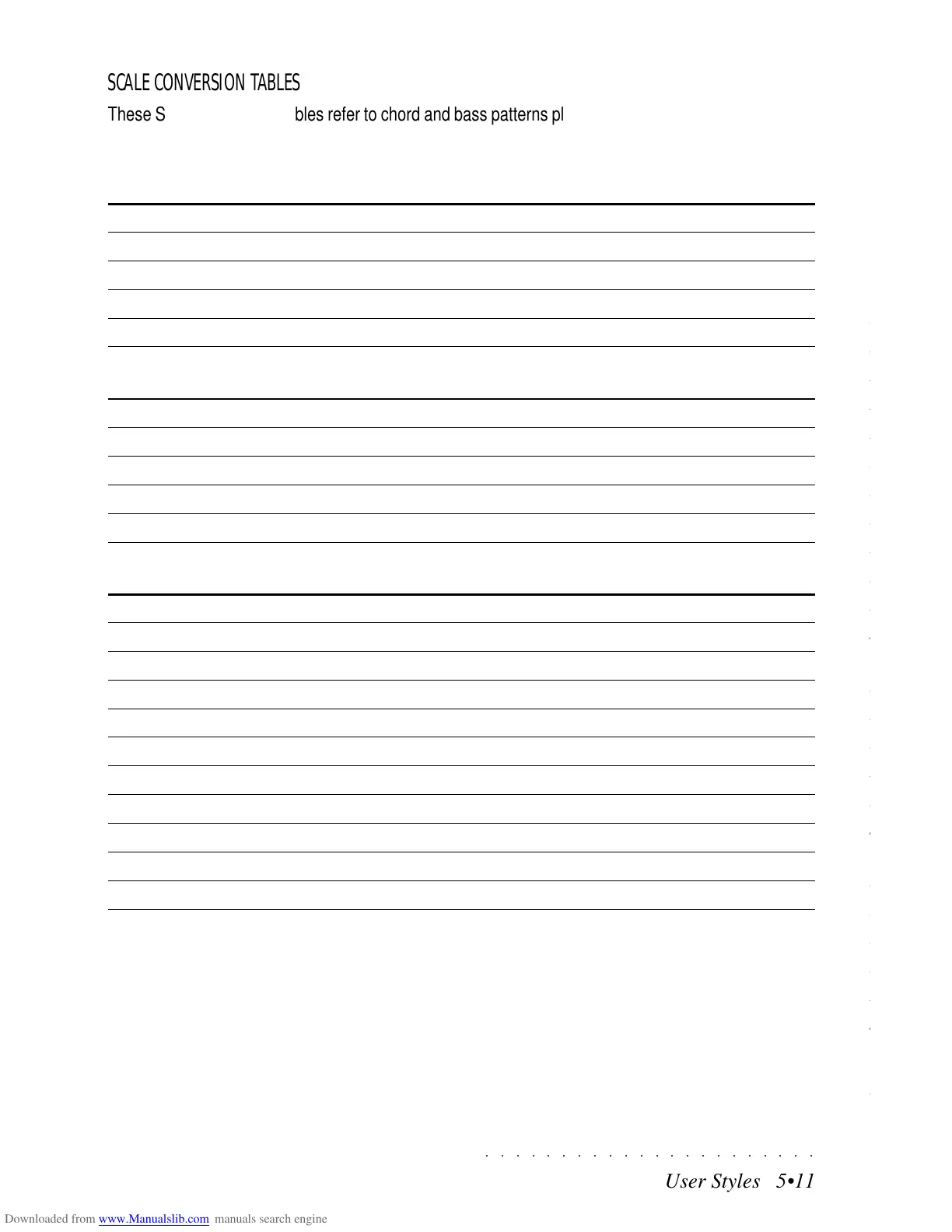○○○○○○○○○○○○○○○○○○○○○○
2•50 Reference Guide
○○○○○○○○○○○○○○○○○○○○○○
2•50 Reference Guide
Cancelling assignments
DEASSIGN (F5)
The Deassign command cancels a sample as-
signment.
1. Select the Sample to deassign.
2. Press the soft button F5 to deassign the sam-
ple.
After deassigning, the sample will play across
the entire keyboard range, but only if it is se-
lected.
If you wish to save the sample as part of the
final Waveform, you must reassign a note
range before proceeding.
Cancelling samples
DELETE (F3)
The Delete option allows you to cancel the se-
lected Sample from the Sample Translator.
After listening to your Samples and assigning
them, you may want to eliminate the no longer
required.
Simply select the sample you wish to cancel and
press the soft button F3.
You are prompted with a message to reconfirm
the operation with ENTER or cancel with Escape.
Press ENTER to delete the Sample.
Cancelling assignments
DEASSIGN (F5)
The Deassign command cancels a sample as-
signment.
1. Select the Sample to deassign.
2. Press the soft button F5 to deassign the sam-
ple.
After deassigning, the sample will play across
the entire keyboard range, but only if it is se-
lected.
If you wish to save the sample as part of the
final Waveform, you must reassign a note
range before proceeding.
Cancelling samples
DELETE (F3)
The Delete option allows you to cancel the se-
lected Sample from the Sample Translator.
After listening to your Samples and assigning
them, you may want to eliminate the no longer
required.
Simply select the sample you wish to cancel and
press the soft button F3.
You are prompted with a message to reconfirm
the operation with ENTER or cancel with Escape.
Press ENTER to delete the Sample.
○○○○○○○○○○○○○○○○○○○○○○
User Styles 5•11
○○○○○○○○○○○○○○○○○○○○○○
User Styles 5•11
SCALE CONVERSION TABLES
These Scale Conversion tables refer to chord and bass patterns played in the key of C and show which
notes are converted. The changes are expressed in semitones, therefore, if the note C shows a conver-
sion of –2, the note is converted 2 semitones down (Bb). Notes not converted are shown blank.
Scale Converter in OFF status: C Major riff –> C 7th riff
C# D# F# G# A#
CDEFGAB
accomp. –2 +1 –1
bass +1 –1
Scale Converter in OFF status: C Major riff –> C minor riff
C# D# F# G# A#
CDEFGAB
accomp. –1 +1 –1
bass –1 +1 –1
Scale Converter active: C Major riff –> C 7th riff
C# D# F# G# A#
CDEFGAB
7th 1 accomp. –2
7th 1 bass
7th 2 accomp. –2 –1
7th 2 bass –1
7th 3 accomp. –2 +1
7th 3 bass +1
7th 4 accomp. –2
7th 4 bass
SCALE CONVERSION TABLES
These Scale Conversion tables refer to chord and bass patterns played in the key of C and show which
notes are converted. The changes are expressed in semitones, therefore, if the note C shows a conver-
sion of –2, the note is converted 2 semitones down (Bb). Notes not converted are shown blank.
Scale Converter in OFF status: C Major riff –> C 7th riff
C# D# F# G# A#
CDEFGAB
accomp. –2 +1 –1
bass +1 –1
Scale Converter in OFF status: C Major riff –> C minor riff
C# D# F# G# A#
CDEFGAB
accomp. –1 +1 –1
bass –1 +1 –1
Scale Converter active: C Major riff –> C 7th riff
C# D# F# G# A#
CDEFGAB
7th 1 accomp. –2
7th 1 bass
7th 2 accomp. –2 –1
7th 2 bass –1
7th 3 accomp. –2 +1
7th 3 bass +1
7th 4 accomp. –2
7th 4 bass

